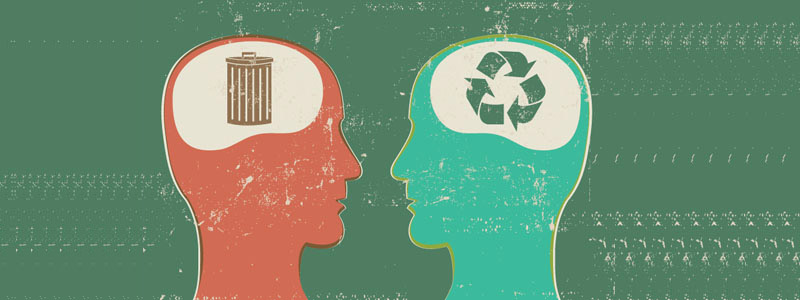The Future of Product Pricing
Mankind, especially as exemplified in western culture, has developed into a ‘throw away’ society with a like-minded economy.
For the past century now, products have been made inexpensive by using processes and materials which minimize labor input at the expense of energy input, such as automated molding and machining. (It used to be that the material was expensive and the labor was cheap. Now the material processing is cheap and the labor is expensive.)
Our landfills have now become heaps of finished goods where nature’s entropy gradually decays the product back to raw materials which can become pollutants in their original form. Harmful chemicals which were bound together in the manufacturing process separate. They leach out of dumps and landfills and recombine to form other nasty compounds. Greenhouse gases escape into the atmosphere. Not only is the energy we put into building the product originally wasted, but the raw materials left over contribute to polluting our watersheds and atmosphere – causing all of society to spend more energy to clean them up again later.
This all happened because we use the wrong economic model to price our products. Traditional economics requires us to pay for the cost of building the product – the front end costs – in the product’s price, while the future costs (back end) are left up to the environment to absorb. We need to change this.
Instead of pricing our goods in a way that accounts for only the production costs (as well as markup and profit), we should include the cost of returning the material used to its natural state when it has reached its economic life. Instead of letting the dump do that job in an uncontrolled manner with the attendant costs of un-assessed pollution, we should account for that cost up front in the product cost to the people buying those products.
If we did that (and it would have to be done by all manufacturers at once so that there is no unfair advantage to leaving out the back end costs), the cost of products would rise to accommodate disposition, but then the natural selection of the competitive market could take over. Manufacturers would be incentivized to evolve ways in which the products that cost less to bring them back to a natural state would be priced lower than those products which are hard to dispose of or hurt the environment more. We would then be rewarding the more ‘natural’ products with both lower up front costs AND back end costs. Environmentally safe products would no longer be seen as higher priced ‘alternatives’ bought only by those who cared and voluntarily paid more. By monetizing and including the costs of allowing the products to decay in the purchase price we would also raise the funds available for proper cleanup, complete recycling efforts, and restoration.
Why pay higher prices for products if we can avoid it? When you think about it, we are paying the entire price anyway – front end and back end – we just don’t account for it in our current system. We live on a single planet which can be considered a closed system. We will eventually (and there’s the key word) need to pay for all of the energy, natural resources and monetary costs to maintain a clean environment, or we will suffer the consequences. The question is only: Who will pay for the costs that we’ve asked the environment to absorb?
The way we do it now, we kick the can of ‘cost’ down the road to be paid for by later generations so that we can enjoy lower priced goods now. The individual today gets to benefit from lower costs at the expense of society at a future date, which pays the rest of the cost in the form of pollution, taxes and EPA clean up funds.
The market has always tried to create cheaper goods for consumption, and has been allowed to do so by ignoring the back end costs and using the environment as a no-cost dump. Then, only when society as a whole decides to fix the problems of pollution, it pays the rest of the costs by raising taxes and recycling funds on everyone – not just those who bought the product. There is no feedback loop for correction to occur.
We are like children, who have not learned about ‘deferred gratification’ yet. This will certainly require a revolutionary change to our current model of free market capitalism, but also illustrates how this model is flawed, as it was borne out of the time when natural resources were virtually inexhaustible. We need to adapt or die in our own stink.




